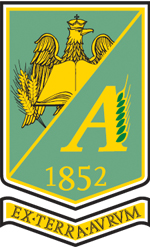Published in Scientific Papers. Series A. Agronomy, Vol. LX
Written by Niculae DINCĂ , Daniel DUNEA , Stefano CASADEI , Nicolae PETRESCU , Sebastian BARBU
The rationale of the overall experiment was to emphasize the ecophysiological behavior of alfalfa in the eco-climatic conditions of Targoviste Piedmont Plain, from the south of Romania, during three contrasting years of cropping (2012-2014) from the rainfall point of view. Potential evapotranspiration (PET) is a complex index that describes the conceptual processes of soil water losses in atmosphere through evaporation and transpiration from the canopies depending on the plant species, land cover, climatic conditions, and soil type. Reference ET from a defined vegetated surface is a function of local weather serving as an evaporative index by which specialists can predict ET for a wide range of vegetation and surface conditions using the application of “crop” coefficients for agricultural or landscaped areas. The objectives of the study were to establish the water use (ETc) and water use efficiency (WUE) of alfalfa for the specific conditions of Targoviste Piedmont Plain, Romania, and to quantify the effects of limiting water on the growth and development of alfalfa tested cultivars. Roxana and Mihaela cultivars of alfalfa (Medicago sativa L.) developed by NARDI Fundulea were sown in a Latin rectangle design with four replicates. Both cultivars showed valuable biological characteristics regarding the WUE in non-irrigated conditions i.e., annual average of WUE of 13.4 kg DM mm-1 ha-1 (1st year of cropping), 14.7 (2nd year) and 18.4 (3rd year) in Roxana cultivar, and 13.6 kg DM mm-1 ha-1 (1st year of cropping), 16.1 (2nd year) and 19.1 (3rd year) in Mihaela cultivar, respectively. The significant increasing of WUE in the last year of cropping was correlated with a well-distributed rainfall regime during the vegetation season and increased annual quantity (>1000 mm). No significant differences (p<0.05) were found in yield and WUE among varieties and between cropping years. The results can be used to estimate the economic impact of irrigation use, water consumption and optimal scheduling in alfalfa cropping systems.
[Read full article] [Citation]




